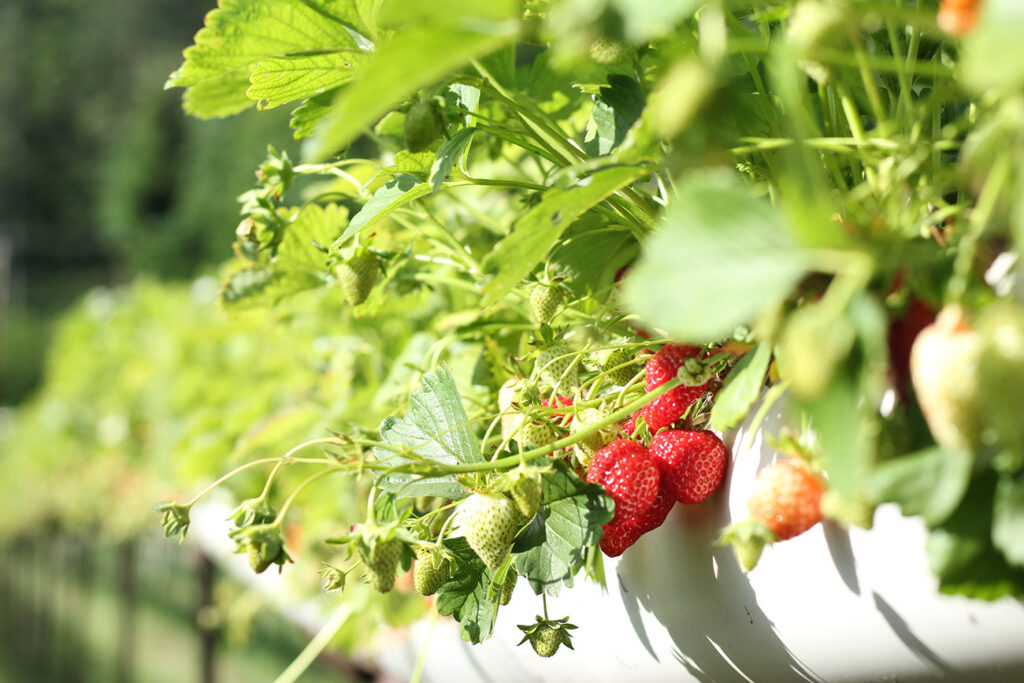Strawberries are several species of plants, cultivated for their edible fruit. The strawberry is a fruit with a conical or almost round shape, of variable size depending on the species. The strawberry plant is of the herbaceous type, while the root system is fasciculate and is made up of roots and rootlets. It is small, no more than 50 cm tall, with numerous leaves originating from a very short crown or rhizome that is at ground level and forms the base of the plant’s growth. The flowers are white, arranged in cymes and have a 5-piece cleft calyx, 5 rounded petals, and numerous stamens and pistils.

Importance of strawberry cultivation
In Mexico, strawberry cultivation occupies 1% of the area dedicated to agriculture, it is very important because it generates foreign exchange, as it is an export product. In Mexico, strawberries are grown in 12 states, but only three of them have a significant level of production: Michoacán, Baja California and Guanajuato, entities that generate 91.55% of the total national strawberry production.
Strawberry weather conditions
Strawberry is a crop that adapts very well to many types of climates. Its vegetative part is highly resistant to frost, managing to withstand high temperatures and long days (more than 12 hours of light) cause excessive vegetative growth; low temperatures and short days induce flowering. The area suitable for fruit production is located between 1,300 and 2,000 meters above sea level. It prefers balanced soils, rich in organic matter, aerated, well drained, but with a certain water retention capacity. It should be noted that temperatures below 12°C during fruit set produce deformed fruit.

Nutritional requirement of the crop
Strawberry has a high demand for Nitrogen and Potassium because they are the main components of the fruit. Optimal doses of Nitrogen and Potassium are essential for the development of the crop. However, excessive levels of Nitrogen produce soft fruits, delay ripening, decrease yield and increase the proliferation of diseases caused by fungi.
Seedling production
Commercial propagation of strawberry plants is done asexually (clones), through the multiplication of stolons from a “mother plant”. Today there are two production systems for strawberry plants through nurseries, one is the bare-root plant production and the other is the root ball plant. However, in both systems it is necessary to start with healthy and genetically identified plant material (mother plants), with defined characteristics.
Plant nursery in root ball
In the root ball plant nursery, the mother plant is allowed to emit stolons on the sides of the gutters, forming species of “curtains”. In this type of nursery, the stolons are allowed to develop suspended, forming a kind of “curtains” on the sides of the gutter. The “curtains” of new plants are developed in three months from the establishment of the mother plant and are harvested one month later, that is, if a plant is required for July or August, the mother plant must be established in the months of February or March. Under this system, up to 2 million plants per hectare can be obtained.

The root ball strawberry plant has taken on great relevance in strawberry propagation, guaranteeing greater health, earliness and uniformity in the new plants. It is usually generated in less time than the bare root plant, while avoiding the use of soil disinfectants.
Rooting.
Each group of plants are rooted within individual tunnels, since the rooting time differs between each group of plants, which is another reason for grouping them in this way. For rooting, a cold treatment is applied, in addition to some growth regulators, such as auxins, together with other products (calcium, phosphorus or tryptophan).
 AgronoBlog – Agriculture Blog
AgronoBlog – Agriculture Blog 

